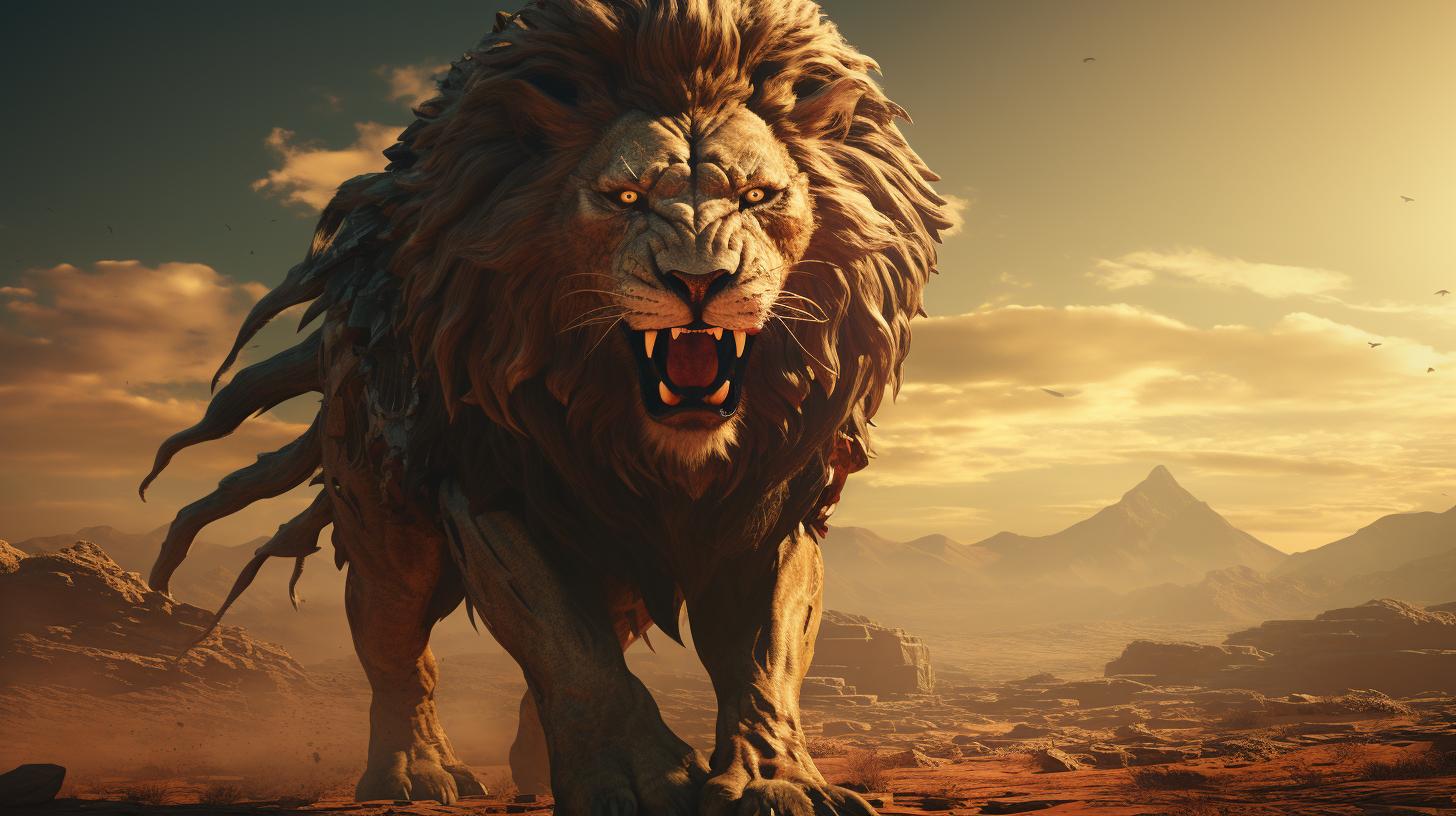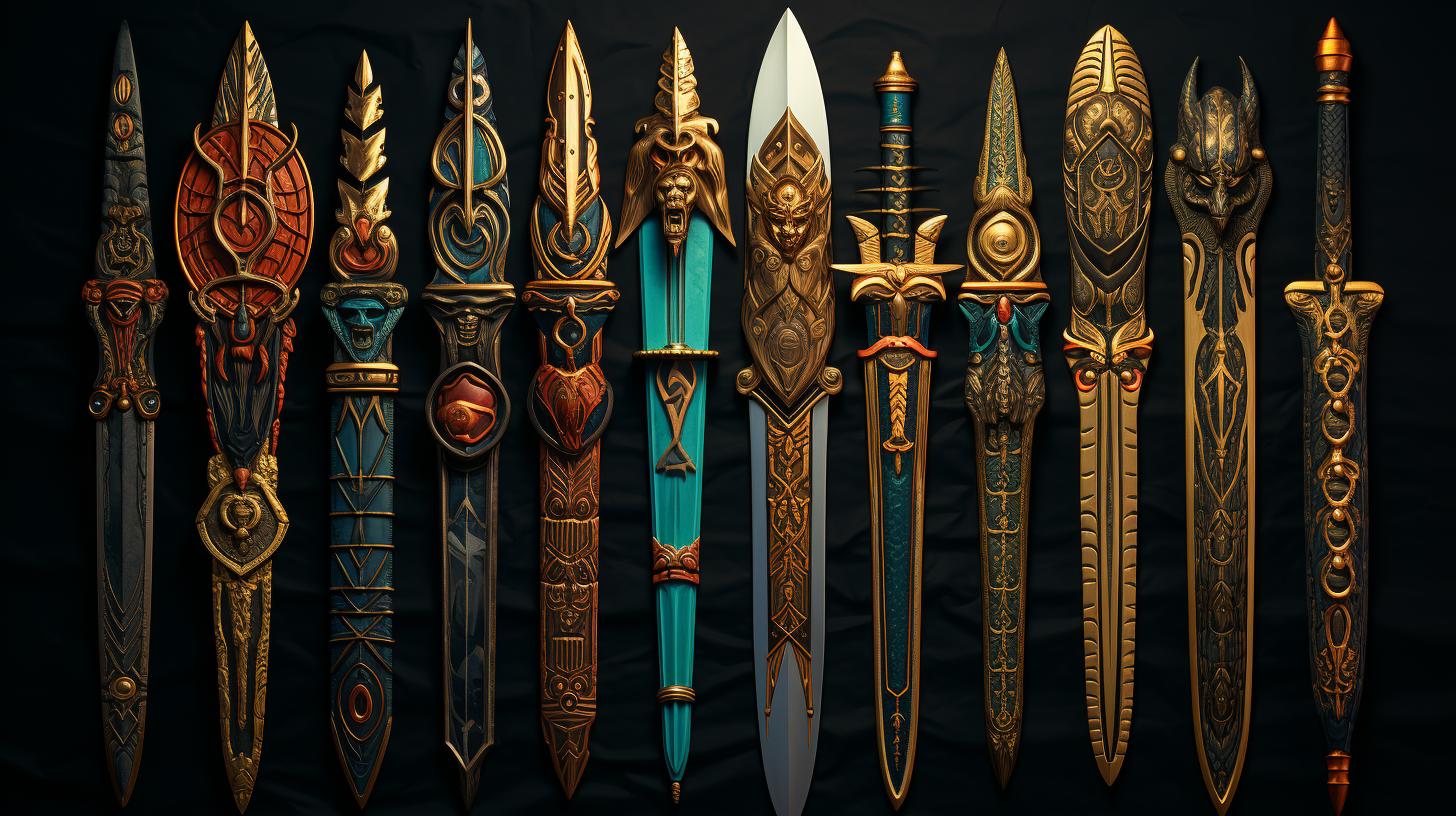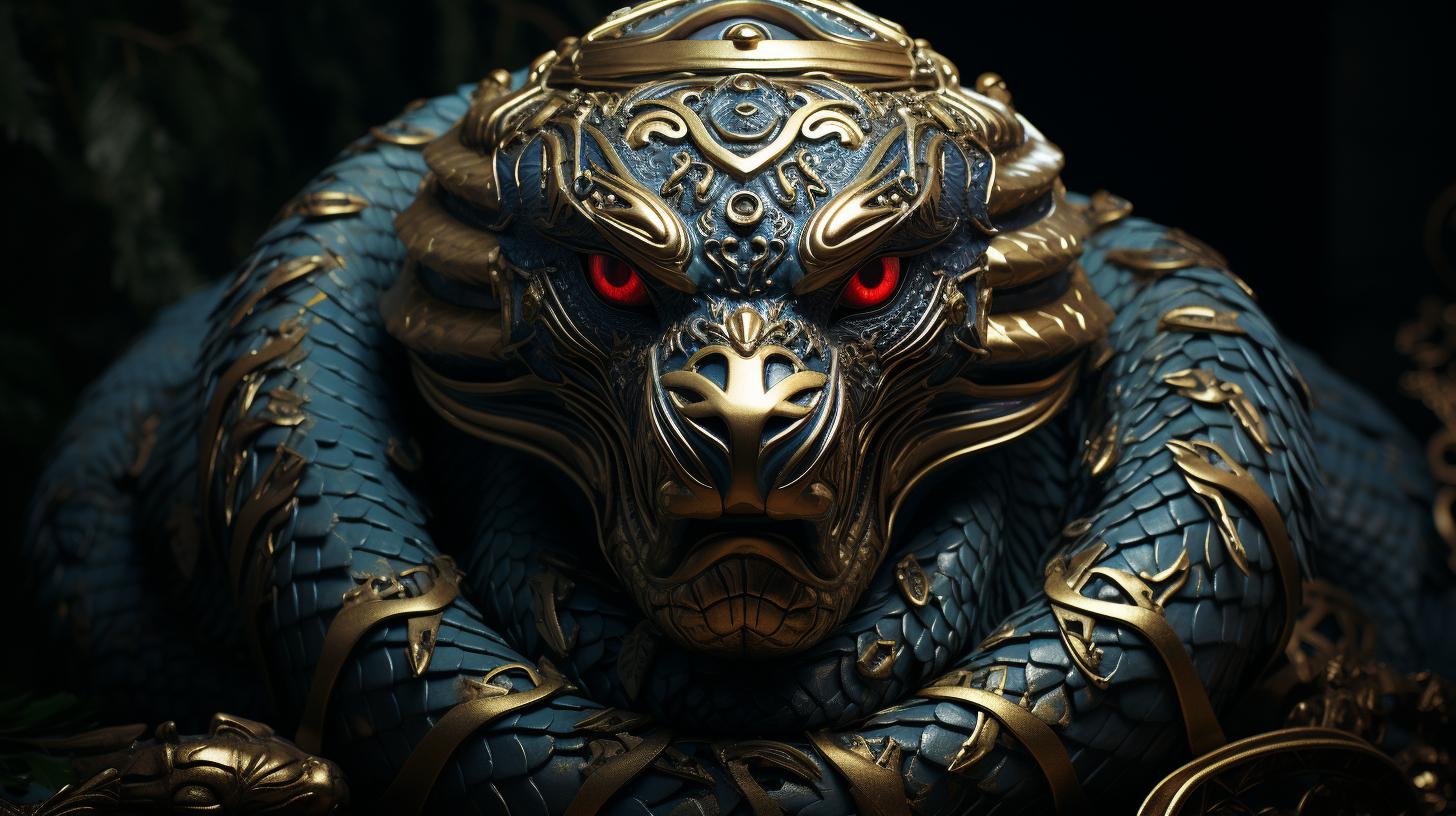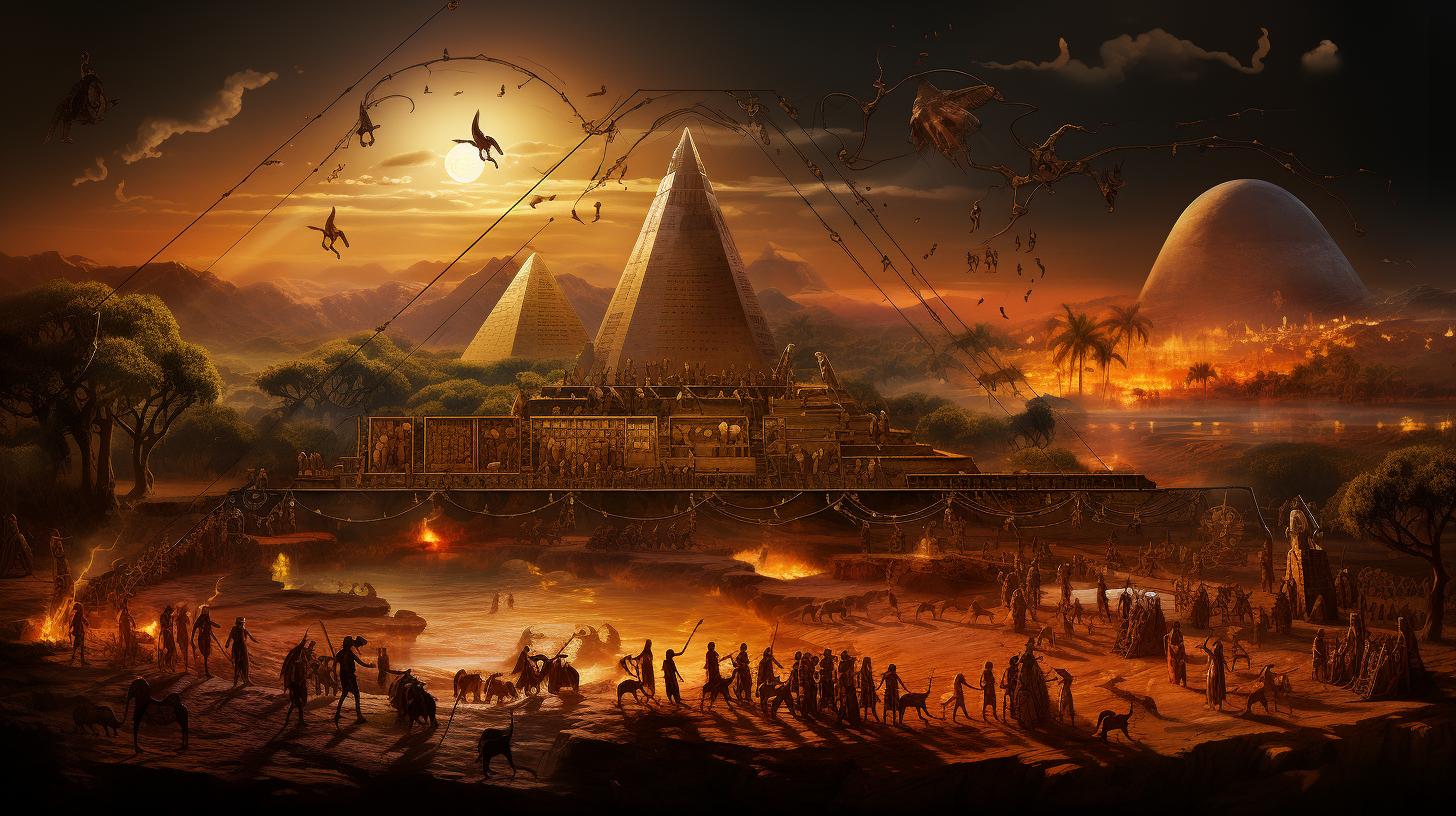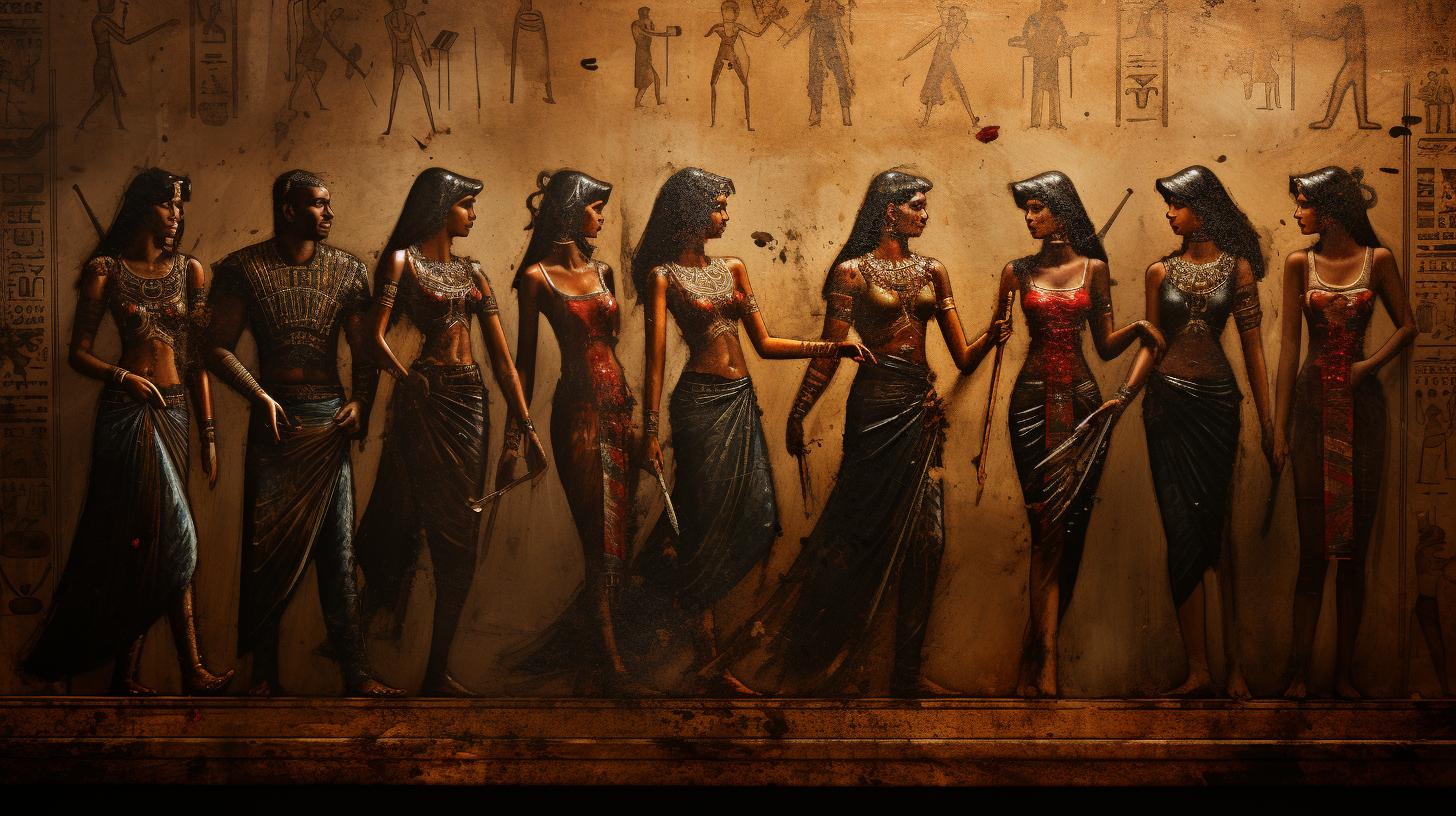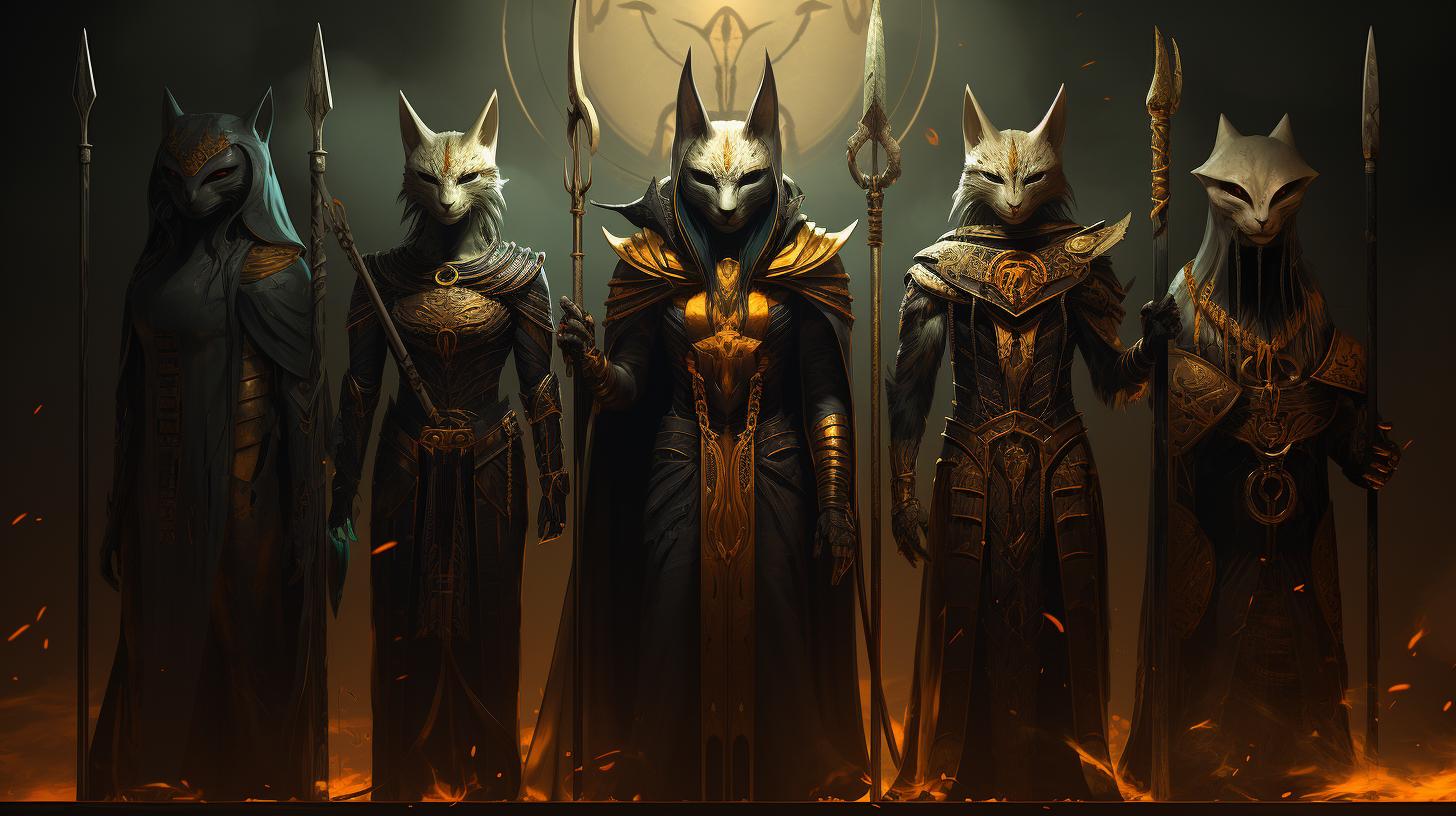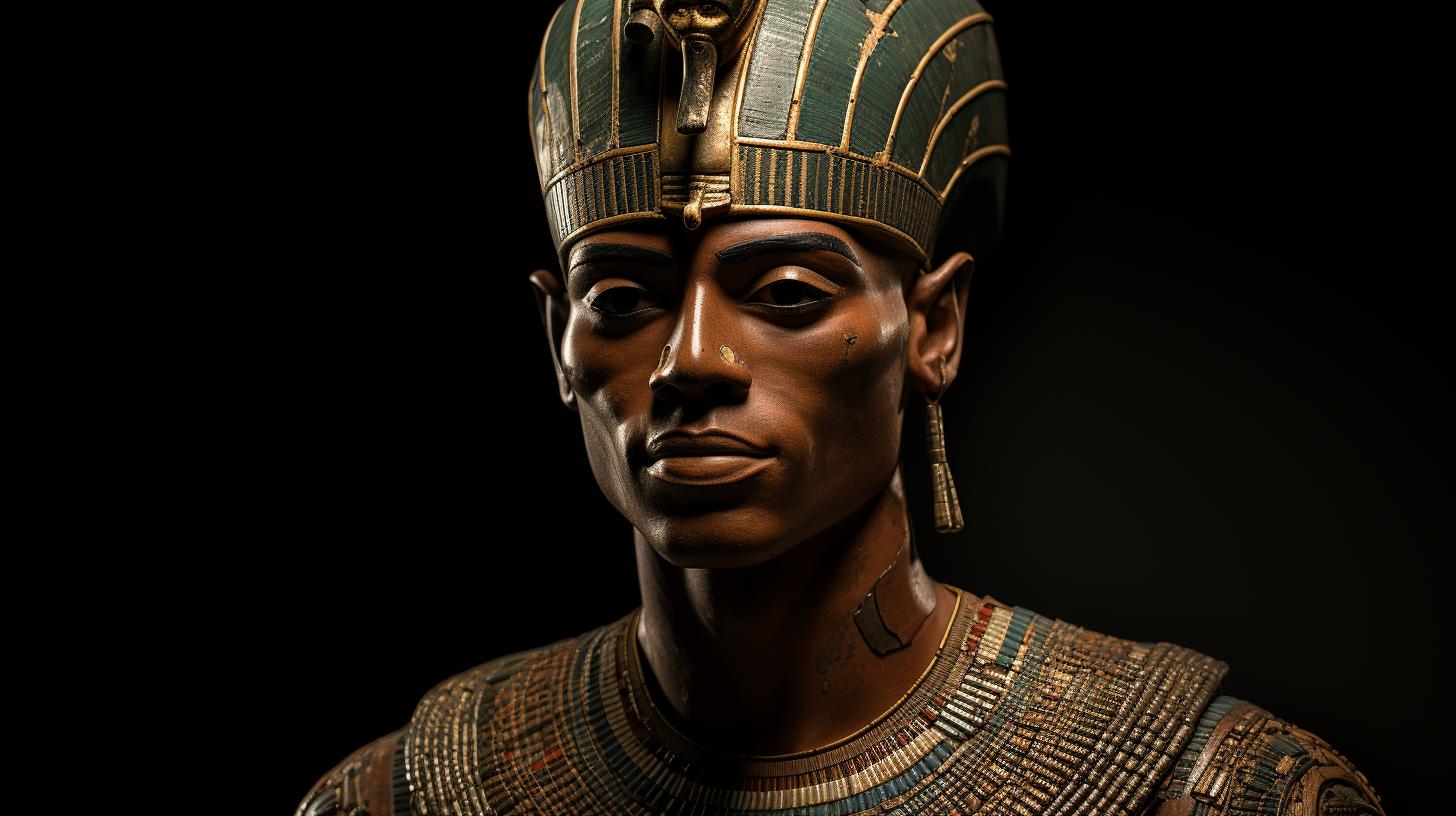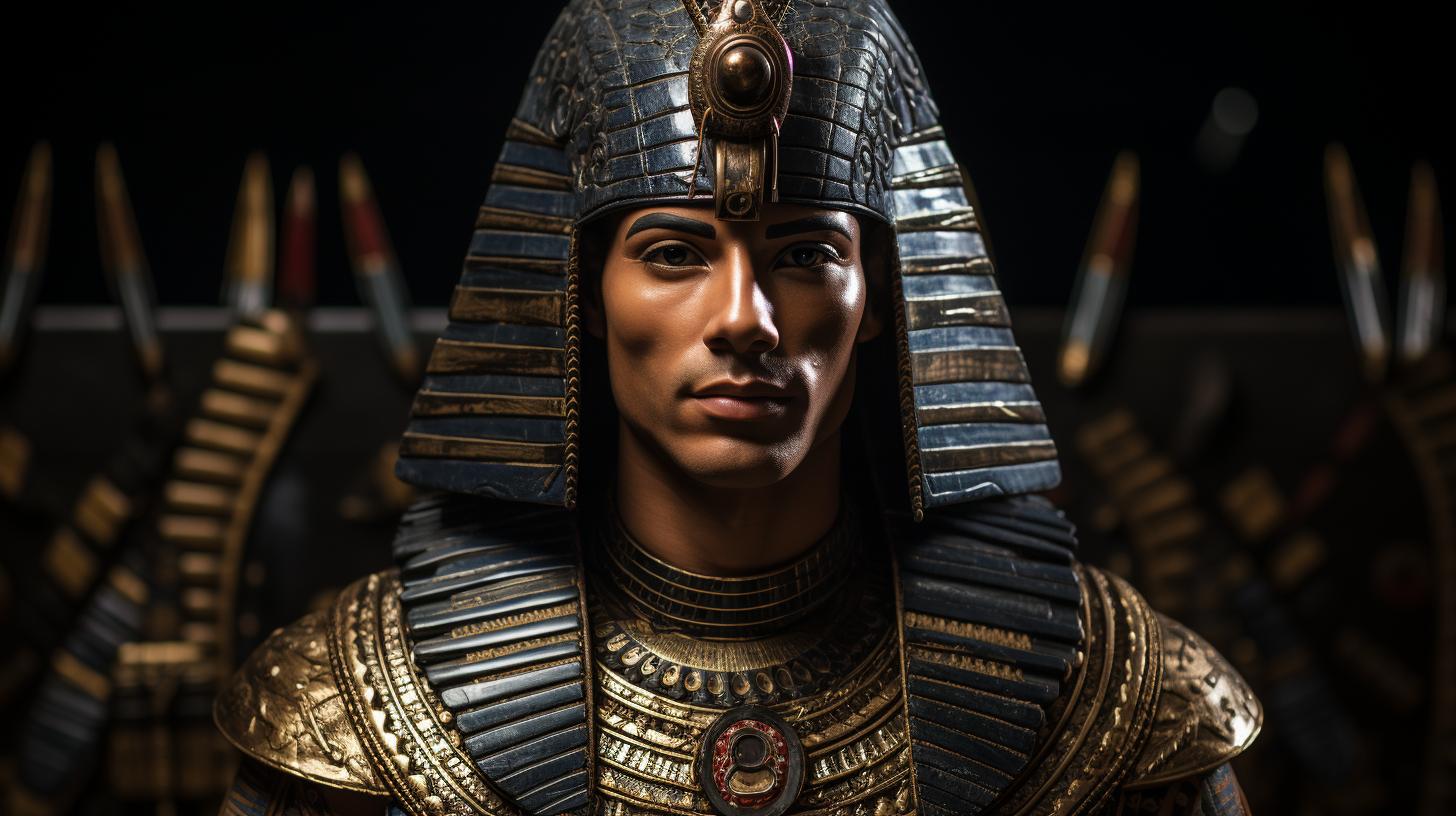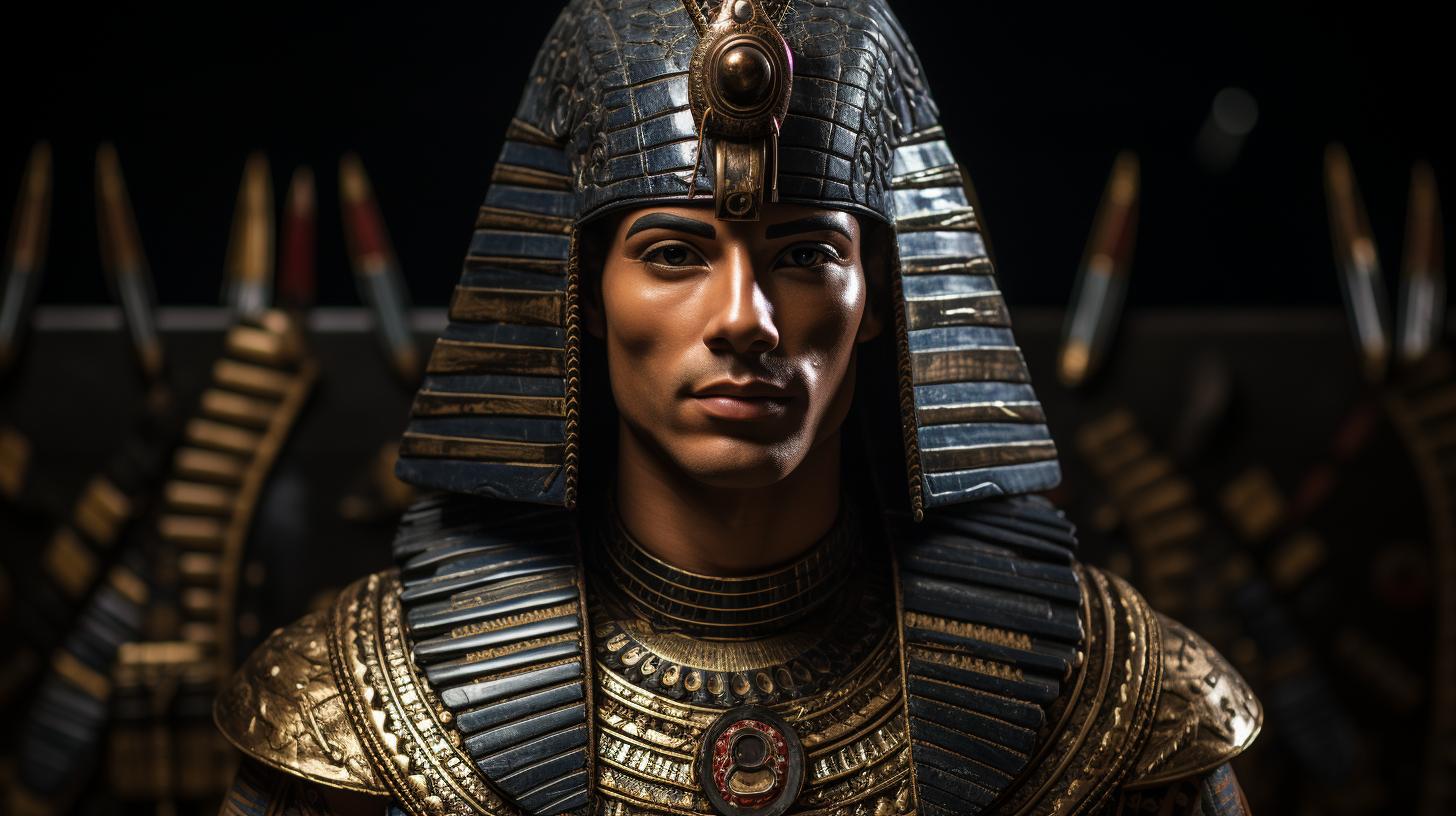Sha Egyptian Mythology: Unveiling the Ancient Secrets of Egypt
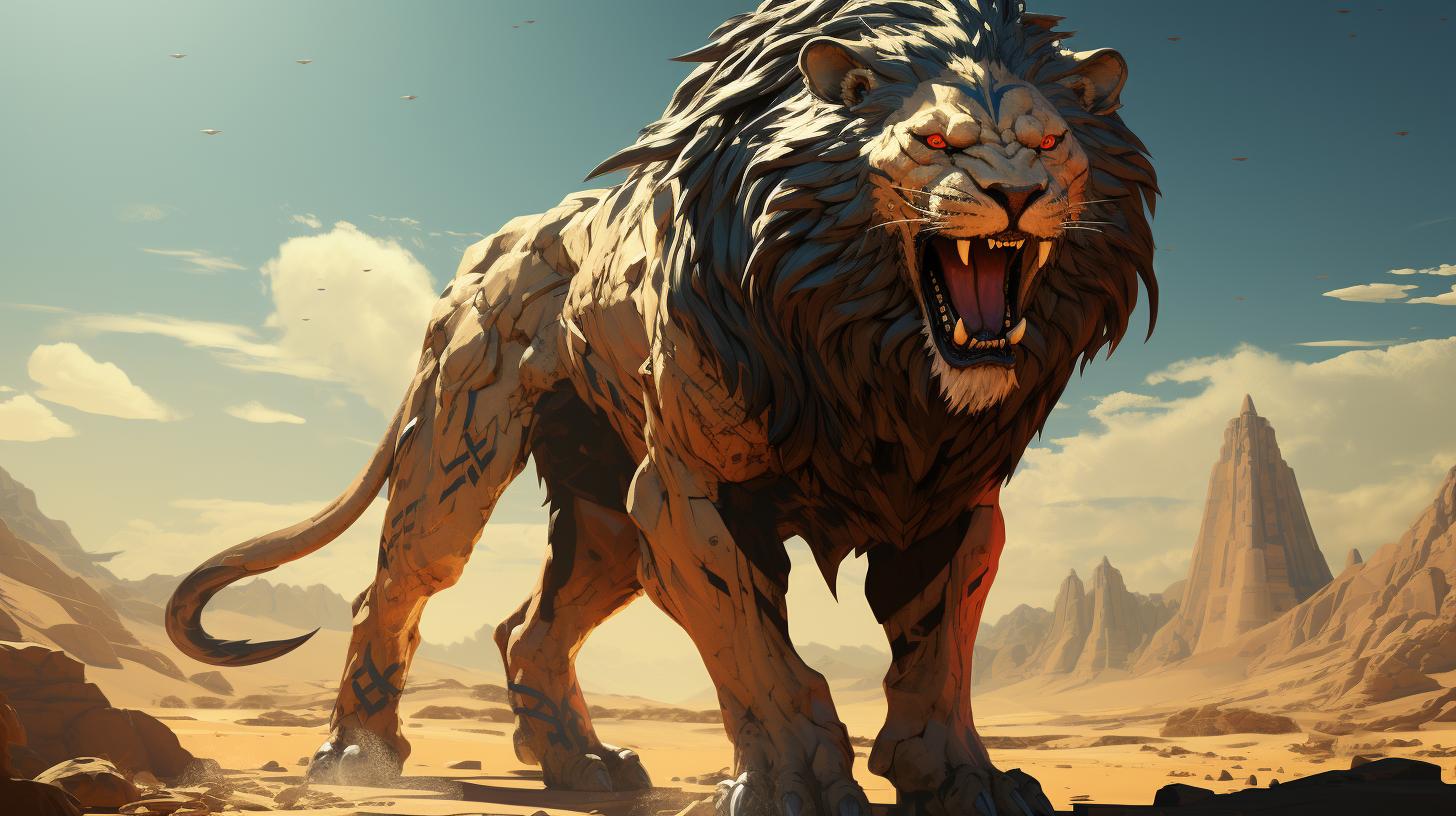
Sha Egyptian mythology is an ancient belief system that originated in Egypt. It revolves around a pantheon of gods and goddesses, such as Horus, the falcon-headed god, and Set, the god of chaos and desert.
Sha mythology greatly influenced the civilization of ancient Egypt, including the relationship between pharaohs and the Sha gods. Art and symbols played a crucial role in depicting Sha mythology, while concepts like the afterlife and the underworld were prominent themes.
Recent archaeological findings continue to shed new light on Sha mythology, highlighting its lasting legacy and impact on contemporary art and culture.
Overview of Sha Egyptian Mythology
Sha Egyptian mythology is a rich and captivating belief system that has fascinated scholars and history enthusiasts for centuries. This ancient mythology is deeply rooted in the culture and history of ancient Egypt, providing insights into the religious beliefs and practices of the time.
In Sha Egyptian mythology, a pantheon of gods and goddesses played significant roles in shaping the world and governing various aspects of human life. These deities were worshipped and revered by the ancient Egyptians, who believed that they held immense power and influence over the natural elements, fertility, protection, and the afterlife.
The myths and stories of Sha Egyptian mythology are filled with symbolism, metaphor, and allegory, offering profound insights into the human condition and the spiritual realm. Through these tales, the ancient Egyptians sought to make sense of the world around them, explain natural phenomena, and understand their place in the cosmic order.
- The gods and goddesses in Sha Egyptian mythology represented different aspects of life and nature. Some were associated with specific animals, such as Horus, the falcon-headed god, and Set, the god of chaos and desert.
- Ancient Egyptian civilization was deeply influenced by Sha mythology.
The beliefs and rituals associated with these deities shaped various aspects of daily life, including religious ceremonies, art, architecture, and even political power.
- Sha Egyptian mythology also played a crucial role in the relationship between pharaohs and the divine.
Pharaohs were seen as the earthly embodiment of the gods, and their rule was believed to be divinely ordained.
- Art and symbols were essential in the representation of Sha Egyptian mythology.
Temples, statues, and hieroglyphs depicted gods and goddesses, capturing the essence of their power and significance.
- The afterlife held great importance in Sha mythology. Concepts like the Duat, the underworld, and Canopic jars reveal the ancient Egyptians’ beliefs about the journey of the soul after death and the preservation of the body.
- Recent archaeological discoveries continue to shed light on Sha Egyptian mythology.
Excavations and research unveil new insights into ancient Egyptian religious practices, symbolism, and the interconnectedness of Egyptian culture.
- The enduring legacy of Sha Egyptian mythology can be seen in contemporary art and popular culture.
Artists and writers draw inspiration from this ancient belief system, creating artworks, stories, and films that explore its themes and motifs.
For those interested in delving deeper into the captivating world of Sha Egyptian mythology, there are numerous resources available for further reading, including books, academic papers, and online collections.
Origins and History of Sha Egyptian Mythology
The origins of Sha Egyptian mythology can be traced back to the ancient civilization that flourished along the banks of the Nile River thousands of years ago. This rich and complex belief system developed over time, intertwining with the cultural, social, and religious practices of the ancient Egyptians.
Sha mythology was deeply connected to the natural world, with gods and goddesses representing various aspects of nature, such as the sun, moon, sky, and earth. These deities played significant roles in the lives of the Egyptians, shaping their understanding of the universe and their place within it.
The history of Sha Egyptian mythology can be divided into different periods, each marked by the rise and fall of different gods and goddesses. The earliest records of Sha mythology date back to the Predynastic Period, when a multitude of local deities were worshiped across the region.
As the civilization became more centralized, so did the pantheon of gods. The Early Dynastic Period saw the emergence of major deities like Horus, the falcon-headed god associated with the sky and kingship, and Set, the god of chaos and deserts.
Sha mythology reached its peak during the Old Kingdom, when pharaohs solidified their divine status by aligning themselves with the Sha deities. The belief in the divine nature of the pharaohs greatly influenced the political and social structures of ancient Egypt.
Over time, Sha mythology evolved and absorbed influences from other ancient cultures, such as those of neighboring civilizations and conquerors like the Greeks and Romans. These interactions and cultural exchanges shaped the mythology into a diverse and complex system.
In later periods, especially during the Hellenistic and Roman eras, Sha mythology started to decline in significance as foreign religions gained popularity. However, traces of Sha mythology can still be found in various forms of ancient Egyptian art, literature, and religious practices.
As we explore the origins and history of Sha Egyptian mythology, we unravel a fascinating tapestry woven by the ancient Egyptians, revealing their beliefs, values, and the deep connection they had with the divine forces that governed their world.
Major Gods and Goddesses in Sha Egyptian Mythology
Sha Egyptian mythology revolves around a pantheon of powerful gods and goddesses who played significant roles in the ancient Egyptian belief system. These deities were revered and worshipped by the ancient Egyptians, and their stories continue to captivate and inspire us today.
Horus: The Falcon-headed God
Horus, with his falcon head and human body, was one of the most important gods in Sha Egyptian mythology. He was regarded as the god of the sky, war, and protection.
Horus was believed to be the son of Osiris and Isis, and his role in Egyptian mythology was intricately tied to the concept of kingship and the pharaoh’s power.
According to the myth, Horus avenged his father’s death by battling against Set, his treacherous uncle. This conflict symbolized the eternal struggle between good and evil, order and chaos. Horus eventually emerged victorious and became the rightful ruler of Egypt, representing the divine authority of the pharaohs.
As a powerful deity, Horus was also associated with the sun, often depicted with a solar disk resting on his head. His role extended beyond the earthly realm, as he was believed to guide and protect the souls of the deceased in their journey through the afterlife.
Symbolism and Representation
Horus was frequently depicted in ancient Egyptian art, often represented with the body of a human and the head of a falcon or as a falcon itself. The falcon symbolized his keen sight and vigilance, reflecting his role as a protector and a divine observer.
The Eye of Horus, also known as the Udjat Eye, was one of the most recognizable symbols associated with Horus. It represented healing, protection, and royal power. This symbol not only held religious significance but also had practical applications in medicine and mathematics.
Set: The God of Chaos and Desert
Set, also known as Seth or Sutekh, was a complex figure in Sha Egyptian mythology. He was the god of chaos, violence, the desert, and storms. Set possessed both positive and negative attributes, representing the untamed forces of nature and the unpredictability of life.
Traditionally depicted with the head of an enigmatic creature, possibly a mythical animal or a composite being, Set was often associated with dangerous animals such as the sha (a mysterious term associated with turmoil and destruction).
Scholars believe that the sha creature may represent an extinct animal or a mythical creature with a fearsome reputation.
In the mythology, Set was seen as the brother and nemesis of Osiris. He harbored envy and resentment towards his brother, leading him to commit a heinous act of murder.
Set’s actions disrupted cosmic order and introduced chaos into the world.
Role in Egyptian Beliefs
Although Set was often associated with chaos and evil, he also played a vital role in the mythology. Egyptians believed that without the destructive forces represented by Set, the world would stagnate and lose its balance.
Set’s battles against Horus represented the eternal struggle between opposing forces and ensured the cyclical nature of life.
Set was also associated with the desert, which was both feared and revered by the ancient Egyptians.
The desert represented a harsh and dangerous environment, but it also held a spiritual significance as a realm of transformation and rebirth.
The complex nature of Set’s character reflects the ancient Egyptians’ understanding that the world is not purely good or evil.
It emphasizes the importance of balance and the coexistence of opposing forces.
- Set was traditionally depicted with the head of an enigmatic creature.
- Set was associated with dangerous animals and possibly represented by a sha creature.
- Set’s actions disrupted cosmic order and introduced chaos into the world.
- Set played an essential role in maintaining balance and the cyclical nature of life.
- The desert was a significant domain associated with Set, symbolizing transformation and rebirth.
These major gods, Horus and Set, embody the intricate and diverse nature of Sha Egyptian mythology.
Their stories reflect the fundamental beliefs and values of ancient Egyptian civilization, emphasizing the eternal struggle between opposing forces and the perpetual quest for balance and harmony.
Ancient Egypt and Sha Egyptian Mythology
Ancient Egypt was deeply influenced by the rich tapestry of Sha Egyptian mythology, which played a significant role in shaping various aspects of their civilization.
This captivating belief system had a profound impact on religious and cultural practices, art, symbolism, and even the relationship between the pharaohs and their gods.
Influence of Sha Mythology on Ancient Egyptian Civilization
The influence of Sha mythology permeated every facet of ancient Egyptian society.
It provided a framework for understanding the world and the divine forces at play. The pharaohs, in particular, drew their legitimacy and authority from their supposed connections to the Sha gods, which elevated their status to that of divine rulers.
Sha mythology also played a vital role in death rituals and the belief in the afterlife. The concept of judgment in the Hall of Ma’at, where the hearts of the deceased were weighed against the Feather of Truth, reflected the ethical principles upheld by the gods.
This belief instilled a sense of moral responsibility and shaped the behavior of the living.
Relationship between Pharaohs and Sha Gods
The relationship between pharaohs and Sha gods was symbiotic and integral to the stability of ancient Egypt. The pharaoh was seen as the earthly representation of the gods, serving as a mediator between the mortal realm and the divine.
As such, the pharaohs were obligated to enact the will of the gods and maintain order within society.
Pharaohs often aligned themselves with specific Sha deities, seeking their guidance and blessings to ensure the prosperity and protection of Egypt.
Through lavish temple rituals and grandiose constructions dedicated to the gods, the pharaohs solidified their divine connection and asserted their authority.
Symbolism in Sha Mythological Representations
Symbolism played a vital role in the portrayal of Sha Egyptian mythology. Each god and goddess had specific iconography and attributes associated with them. For example, Horus, the falcon-headed god, symbolized protection and divine kingship.
Set, the god of chaos and the desert, represented the untamed forces of nature.
Ancient Egyptian art often utilized symbolism to convey deeper meanings, such as the struggle between order and chaos or the cyclical nature of life and death.
Hieroglyphs, the written form of Egyptian language, were also imbued with symbolic representations of the Sha deities, offering a complex and intricate system of communication.
Understanding the symbolism within Sha mythology is crucial to unraveling the mysteries and significance of ancient Egyptian artwork, artifacts, and texts.
Art and Symbols in Sha Egyptian Mythology
Art and symbolism played a significant role in the depiction and understanding of Sha Egyptian mythology. The artistic representations of gods and goddesses in Sha Egyptian art served as a visual language for conveying their attributes and roles in the mythology.
Depictions of Gods and Goddesses in Sha Egyptian Art
Sha Egyptian art beautifully captured the divine essence of gods and goddesses through various artistic forms. The gods were often depicted with anthropomorphic human bodies but with animal heads, symbolizing their unique characteristics and powers.
For instance, Horus, the falcon-headed god, represented protection and kingship, while Set, the god of chaos and desert, was depicted with the head of a fierce animal like a jackal or an aardvark.
Ancient Egyptian artists paid great attention to detail, carefully crafting intricate sculptures and paintings to reflect the divine qualities of the deities. Their representations showcased the gods and goddesses in majestic poses, adorned with elaborate crowns, headdresses, and accessories that symbolized their divine status.
Symbolism in Sha Mythological Representations
The art of Sha Egyptian mythology was replete with symbolism, conveying deeper meanings and insights into the myths and beliefs. Each symbol used in the artwork had its own significance and communicated a particular aspect of the mythology.
Ankh, the symbol of life, was often portrayed in the hands of gods and pharaohs, representing their connection to eternal life and the divine. The Eye of Horus, a powerful symbol of protection and well-being, was frequently depicted in artwork, serving as a potent talisman against evil forces.
- Serpents, known as Uraei, were symbols of royalty and protection.
- The lotus flower represented purity and rebirth.
- The scarab beetle, associated with the sun god Ra, symbolized creation and resurrection.
These symbolic representations in Sha Egyptian art provided a visual language for understanding and experiencing the mythology.
They conveyed profound messages about the gods’ powers, the cyclical nature of life and death, and the belief in an afterlife.
The Afterlife and Sha Egyptian Mythology
The belief in an afterlife held great significance in Sha Egyptian mythology, shaping the way ancient Egyptians approached death and the journey beyond. This section explores two key aspects of the Sha concept of the afterlife: Canopic Jars and the Duat.
Canopic Jars: Guardians of the Organs in the Afterlife
According to Sha mythology, the afterlife was a realm where the deceased would need their organs to continue their existence.
In preparation for this journey, the ancient Egyptians developed a practice of preserving and protecting these organs using Canopic Jars. These jars, typically made of stone or pottery, were intricately decorated and represented four deities, each responsible for safeguarding a specific organ.
– Hapi, depicted as a baboon, guarded the lungs.
– Imsety, with a human form, safeguarded the liver.
– Duamutef, portrayed as a jackal, protected the stomach.
– Qebehsenuef, depicted as a falcon, watched over the intestines.
These Canopic Jars were often placed within lavish burial chambers or tombs, ensuring the deceased had their vital organs at their disposal in the afterlife.
Duat: The Underworld in Sha Mythology
Sha Egyptian mythology featured the Duat as the realm of the afterlife, a mysterious and complex underworld that the deceased had to navigate on their journey.
The Duat was believed to be a treacherous place, with tests and challenges awaiting the souls of the departed.
In the Duat, the deceased encountered various deities and mythical creatures as they traveled through different regions, such as vast deserts and menacing rivers.
They faced judgment and were required to pass tests that determined their ultimate fate.
According to Sha mythology, the god Osiris ruled over the Duat, presiding over the judgment of souls and their final destinations.
It was believed that the righteous would find eternal bliss in the presence of Osiris, while those deemed unworthy would face eternal punishment.
Understanding the significance of the Duat in Sha mythology provides insights into the spiritual beliefs and practices of ancient Egyptians, highlighting their preparation for the afterlife and the journey of the soul.
In conclusion, the concepts of the afterlife, symbolized by Canopic Jars and the Duat, played a central role in Sha Egyptian mythology. These beliefs and practices surrounding death and the journey beyond continue to fascinate and captivate historians, archaeologists, and enthusiasts in their exploration of ancient Egypt’s rich cultural and spiritual heritage.
Unraveling Sha Egyptian Mythology: New Discoveries and Interpretations
Recent Archaeological Findings related to Sha Mythology
New archaeological discoveries in relation to Sha Egyptian mythology have shed light on previously unknown aspects of this ancient belief system.
Excavations in prominent Egyptian archaeological sites, such as Luxor and Thebes, have unearthed artifacts and inscriptions that provide valuable insights into the rituals, practices, and symbolism of Sha mythology.
One notable discovery is the find of a temple dedicated to the goddess Isis, which revealed intricate wall carvings depicting various Sha deities and their significance in ancient Egyptian society.
These carvings not only showcase the artistic prowess of the time but also provide clues about the roles and relationships of different gods and goddesses within the Sha pantheon.
Recent excavations have also uncovered burial sites showcasing the complex funeral rites associated with Sha Egyptian mythology.
Intricately designed tombs, adorned with hieroglyphs and intricate carvings, showcase the belief in the afterlife and the importance placed on preserving the body for the journey to the underworld.
Furthermore, the discovery of a burial chamber containing a collection of canopic jars, utilized to store the organs of the deceased, sheds light on the importance of the concept of preservation in the Sha mythology’s understanding of the afterlife.
Comparisons between Sha Egyptian Mythology and Other Ancient Mythologies
An intriguing aspect of Sha Egyptian mythology is the comparison that can be drawn between it and other ancient mythologies from different civilizations. Comparative mythological studies have revealed similarities between the Sha gods and deities from other pantheons, such as the Greek and Roman mythologies.
For instance, the god Horus, with his falcon-headed appearance, shares resemblances with the Greek god Zeus and the Roman god Jupiter, both of whom are associated with skies, thunder, and royal authority.
This parallelism suggests a possible cross-cultural influence or universal archetypes in ancient mythological expressions.
Additionally, the god Set, known as the god of chaos and desert in Sha mythology, finds parallels in other mythologies as well.
The Greek god Ares and the Roman god Mars, both associated with war, exhibit similarities to Set, shedding light on the universal themes of conflict and aggression in ancient mythologies.
By examining and comparing Sha Egyptian mythology to other ancient mythologies, we can deepen our understanding of the shared human experiences, archetypal patterns, and cultural interconnectedness that transcend geographical boundaries.
- The recent archaeological findings provide new insights into Sha Egyptian mythology.
- Excavations in Luxor and Thebes reveal important artifacts and inscriptions.
- A temple dedicated to the goddess Isis presents intricate wall carvings.
- Burial sites showcase complex funeral rites and the belief in the afterlife.
- The discovery of a burial chamber with canopic jars highlights preservation beliefs.
- Comparative studies reveal similarities between Sha Egyptian mythology and other ancient mythologies.
- Resemblances are found in gods like Horus, Zeus, Jupiter, Set, Ares, and Mars.
- These comparisons help uncover universal themes and cultural interconnectedness.
Legacy and Influence of Sha Egyptian Mythology in the Modern World
Sha Egyptian mythology continues to exert a significant influence on various aspects of the modern world.
Its rich legacy can be observed in contemporary art, popular culture, and even specific exhibitions dedicated to Egyptian art in New York.
Sha Egyptian Mythology in Contemporary Art and Pop Culture
Contemporary artists draw inspiration from Sha Egyptian mythology to create striking and thought-provoking artworks.
The ancient gods and goddesses, with their fascinating stories and symbolism, offer a deep well of artistic exploration. Paintings, sculptures, and mixed-media installations often incorporate Sha iconography, bringing the mythological realm to life in a modern context.
Moreover, Sha Egyptian mythology has infiltrated various forms of popular culture. From literature and films to video games and comic books, the allure of these ancient stories captivates audiences worldwide. The timeless themes of power, love, and cosmic balance resonate with modern sensibilities, making Sha mythology a fertile ground for storytelling and creative expression.
Sha Mythology and its Impact on New York’s Egyptian Art Exhibitions
New York City, a vibrant hub of art and culture, has witnessed the profound impact of Sha Egyptian mythology on its renowned Egyptian art exhibitions. Curators and museum directors recognize the enduring fascination people have with ancient Egypt and its mythological pantheon.
Exhibitions showcasing Sha mythology provide a captivating glimpse into the ancient civilization’s beliefs and rituals. Visitors can explore the intricately carved sarcophagi, elaborate funerary masks, and stunning hieroglyphic art that reflect the significance of Sha deities in the lives of ancient Egyptians.
These exhibitions serve not only to preserve and showcase the cultural heritage of ancient Egypt but also to educate and inspire visitors. By engaging with the mystique of Sha mythology, visitors gain a deeper understanding of the historical and mythical significance of this captivating era.
- Unique artifacts and ancient relics
- Interactive displays highlighting Sha mythology
- Insights into the role of Sha gods and goddesses in ancient Egyptian society
- Connection between Sha mythology and Pharaonic rule
- Aesthetic representations and symbolism in Sha Egyptian art
In conclusion, the legacy and influence of Sha Egyptian mythology in the modern world are undeniable.
From inspiring contemporary art to captivating audiences in popular culture and museum exhibitions, Sha mythology continues to weave its enchanting tapestry into the fabric of our society.

